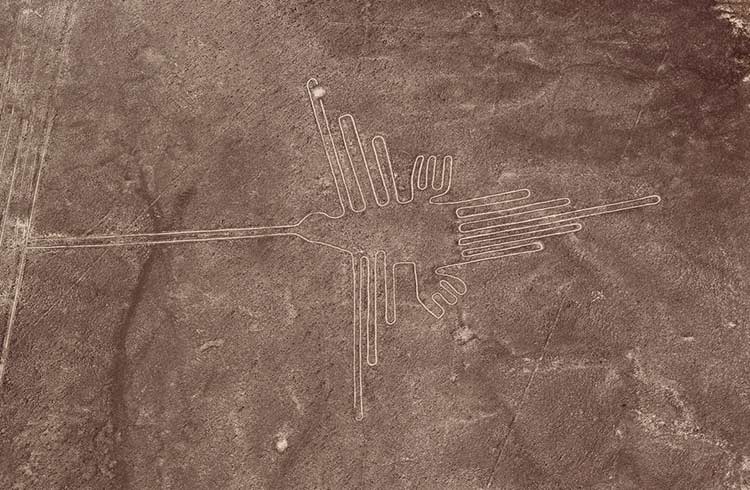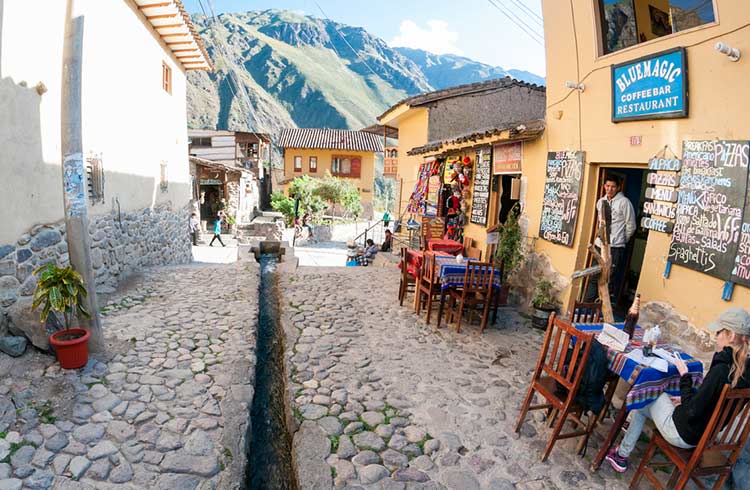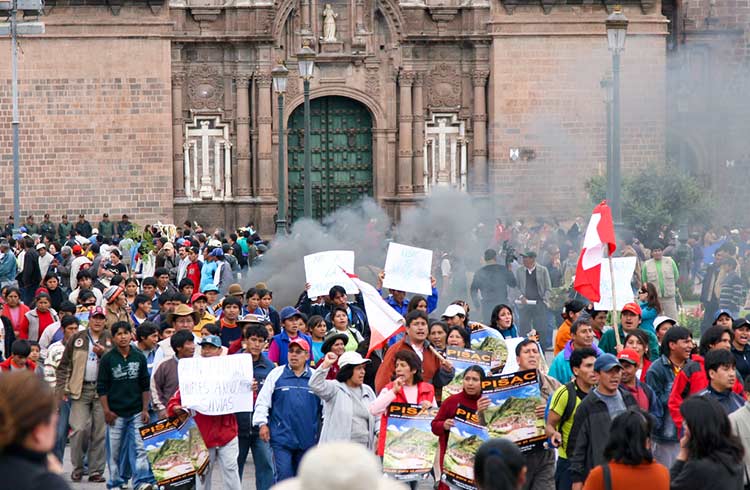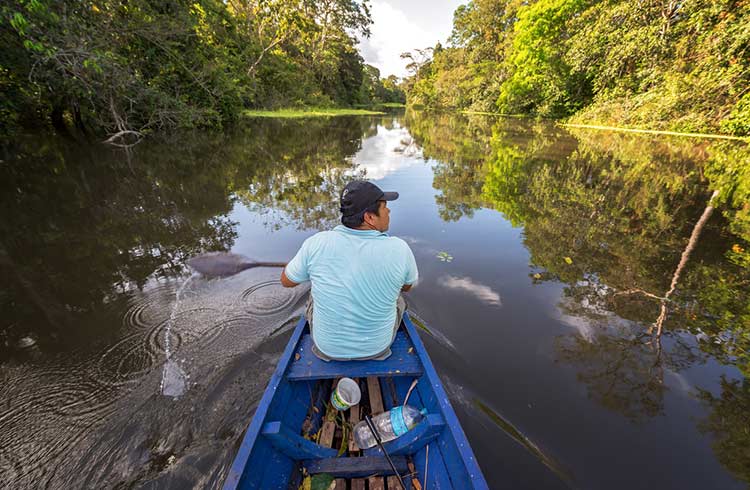Are the Nazca Lines Flights Safe? What You Need to Know
The World Heritage listed Nazca Lines are considered to be one of history's greatest mysteries. Find out about safe airlines, airsickness, and other options to see the sights.
 Photo © iStock/powerofforever
Photo © iStock/powerofforever
Whether you believe they're astronomical diagrams or alien runways, there's no denying Peru's Nazca Lines are an impressive sight.
The ancient designs have inspired hundreds of theories ranging from mundane to bizarre, earned a place in the UNESCO World Heritage List and drawn masses of visitors to the region each year.
More than 1,000 massive geoglyphs and nearly 50 biomorphs depicting plants, animals and humans are spread over 202mi (325km). With razor straight lines stretching over 7.4mi (11km), it is obvious the ancient artworks were made to be seen from the air.
In fact the lines were only rediscovered when the first commercial planes began passing overhead, so the resulting boom in charter flights seems only natural.
However a high number of accidents and tragedies indicate safety standards have not kept up with demand. Flight companies use planes that are almost as old as the Lines themselves and have a history of cutting corners on maintenance and preparation. So, just how safe is it to take a flight over the Nazca lines?
- Your life on the lines
- How do I pick a safe airline?
- Airsickness
- Can I see the lines from the ground?
Your life on the lines
When you take a flight over Nazca, you are literally putting your life on the Lines.
Six people were injured including four foreign tourists, after an Aero Palcazu flight crashed shortly after take off in 2015. Fortunately they were only 16ft in the air, and those on board sustained only minor injuries.
13 people were killed in accidents in 2010. There were many who survived with injuries and several close calls with emergency landings.
Following the air tragedies in 2010, the Peruvian government finally decided to enforce its zero tolerance policy, grounding all planes. After inspections, just seven of 48 planes were cleared to return to work.
Of the 14 companies that operated flights over Nazca, only four passed muster at the time. There are now strict rules in place governing the airlines across all aspects of operating flights.
While the number of incidents has dropped it is important to choose your flight operator wisely.
Obviously not everyone involved in flying planes over the Nazca Lines is acting irresponsibly. It is unlikely you'd be able to convince a pilot to knowingly risk their life by getting into an obviously faulty plane.
However, the workload on pilots is immense. They fly long hours and are often without a co-pilot, meaning they are simultaneously responsible for navigation, commentary and controls.
Limits on the number of planes allowed over the Lines also mean that companies are often forced to compromise safety standards in order to improve profit margins.
A 2008 survey showed 90 per cent of the planes at Nazca's Maria Reiche aerodrome were over 35 years old. While many of the older aircraft were permanently grounded in the 2010 government operation, there are still plenty of tired planes buzzing above Nazca. Old doesn't necessarily mean unsafe of course, but long service is rarely a bonus in aviation.
The sustained, steep curves the pilots use to show off the lines are tough on old fuel tanks. Centrifugal forces pull fuel away from intake lines, which can cause stalls. Cost-cutting measures mean planes are often flying on half-filled tanks or tanks filled with inferior fuel, which only makes matters worse.
There are even stories of pilots intentionally and illegally shutting off their engines and attempting to glide home in an effort to save fuel.
The bottom line is that out-dated equipment, competitive pressures and insufficient oversight make flying over Nazca a dangerous endeavour for tourists and pilots alike.
How do I pick a safe airline?
If you really want to see the designs from up high, there are a few considerations to take on board. As the Lines tend to overwhelm the other attractions in and around Nazca, most people only budget a very short amount of time in the area.
This, along with a huge number of tourists competing for each seat, leaves little room for you to be discerning about which company you use.
If you don't want to miss out and feel more comfortable pre-booking your flight, make sure to ask for the registration number of the plane you'll be going up in. You can plug this into any number of websites, like the Aviation Safety Network, to find out if the aircraft has a rough history.
Similarly, if you want do a little first hand investigation and book when you arrive, try to avoid handing over your money until you see the plane you'll be flying in. Do not be afraid to query the airline over its safety record and safety procedures for their flights.
Unpredictable weather, technical problems and high demand for a small number of working planes mean booking schedules are often thrown out the window. There seems to be little fidelity in the booking system as well, with some travellers reporting turning up early in the morning to snag a seat, while others who pre-booked say there were forced to wait for up to two days to finally get in the air.
Airsickness
One final consideration is that, in order to give both sides of the plane a fair look at the Lines, pilots will be performing a lot of steep banking, rolling the plane from side to side. Lots of patrons experience severe airsickness so make sure to take preventative measures or medication beforehand. If you're taking a risk on one of these flights you really don't want to spend the whole time peering into a plastic bag.
Pilots suggest taking flights early in the morning when turbulence is reduced and visibility is better.
Can I see the lines from the ground?
If you do decide to give the flights the flick, don't assume you should skip over the Nazca Valley entirely. You can still see a handful of the designs from El Mirador, a viewing platform next to the Pan American Highway.
The Aquaducts of Cantayoc are a powerful testament to the ingenuity of the Nazca as the Lines themselves. These spiral wells and irrigation channels brought life to the desert but are also thought to have been the focus of violent clashes and human sacrifices.
The Cementerio de Chauchilla is an eerie necropolis where perfectly preserved mummies rest above and below the desert sand. The site is protected but Peruvian grave robbers still manage to make a living fossicking through relics and remains and selling them on the black market.
If you've had enough of culture the towering dunes of Huacachina are great for high energy sandboarding and dune buggying while the oasis resort nestled beneath them offers plenty of places to relax.
Related articles
Simple and flexible travel insurance
You can buy at home or while traveling, and claim online from anywhere in the world. With 150+ adventure activities covered and 24/7 emergency assistance.
Get a quote


No Comments